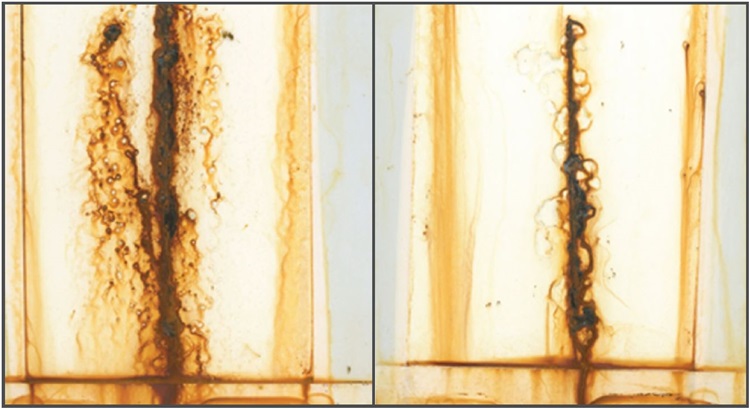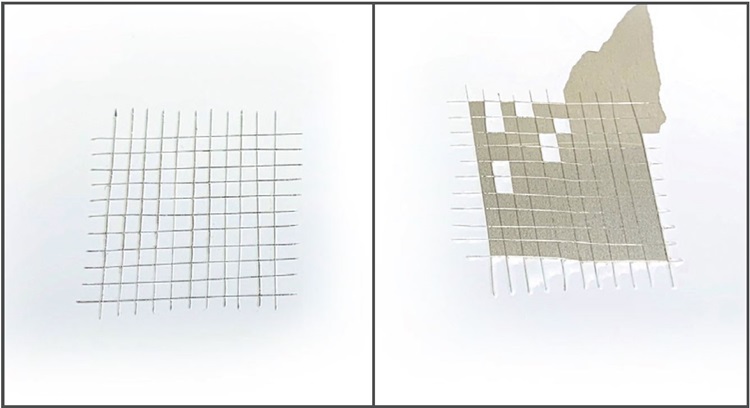Metals are inherently unstable and have a tendency to revert to their more stable mineral forms due to chemical reactions with their environment. At a high level, that’s corrosion.
Corrosion silently deteriorates metal, slowly degrading material integrity over time. The reaction between the metal and its environment – rain, snow, humidity, salt air, chemicals, etc. – begins when water and oxygen in the environment come into contact with the metal. The volume expansion of rust is approximately two to four times greater than the original metal. This volume expansion of the oxide causes the oxide layer to crack, allowing an influx of water and oxygen, yielding more rust.
How quickly corrosion causes deterioration, and the kind of corrosion depends on the metal type and environmental conditions – and the metal protection used to coat the substrate. Two coating technologies that are widely used to deliver corrosion protection for a variety of applications include flash rust inhibitors and adhesion promoters. These additives are used to protect metal substrates like ferrous metal, zinc alloy and aluminum from corrosion and improve direct-to-metal adhesion, as well as intercoat adhesion.
Overcoming Corrosion Challenges
Protecting metal from corrosion presents multiple challenges, which can depend on factors like metal type, environmental conditions and the end-use application. Cost and complexity is one of the challenges to overcome, especially as end users want to minimize costs by reducing the number of coats needed. More end users want to move away from a primer, midcoat and topcoat and more toward direct-to-metal coatings (DTM). With DTM coatings, one layer of coating has to do the same job of providing adhesion, corrosion and resistance to weathering that was previously done by three layers of coatings.
VOC regulations are another challenge, which has meant moving to more water-borne coatings. Not all water-borne coatings provide the same performance as solvent-borne coatings, which is why additives that can enhance the performance of the coating are becoming increasingly more important.
Flash Rust Inhibitors
Flash rust inhibitors are called upon to enable the metal used in machinery, equipment, cans, coils and more to stand up to a variety of conditions that can cause corrosion. They prevent or delay the formation of flash rust on metal surfaces, which can happen when exposed metal surfaces rapidly develop a layer of rust due to exposure to oxygen and moisture in the air.
Flash rust inhibitors are always needed in water-borne metal coatings because water is used as a solvent, as well as in direct-to-metal (DTM) coatings because they come in direct contact with the metal without the use of a primer. As soon as water comes in contact with the substrate, it can begin forming flash rust. Flash rust inhibitors are not needed in the topcoat because a primer would have already been applied.
Adhesion Promoters
Achieving strong adhesion between the corrosion protection coating and the metal substrate is critical for long-term performance. That’s why adhesion promoting additives are used so the coating tightly adheres to the substrate to prevent water and other species from getting to the metal substrate, slowing down or preventing corrosion for an extended period of time. Water will eventually get to the metal, but a good adhesion promoter can significantly slow it down. Both adhesion promoters and flash rust inhibitors can be used simultaneously to deliver additional benefits.
Lubrizol Corrosion Protection Additives
Lubrizol has developed multiple technologies to protect metal from corrosion and improve direct-to-metal adhesion, as well as intercoat adhesion. These additives are compatible in both water-borne and solvent-borne coating systems, and react with the metal to deliver desired properties without impacting the stability of the coating system. They can be incorporated as a component in DTM coatings, primers or wash primer formulations.
Lubrizol adhesion promoters and flash rust inhibitors are proven in a variety of applications, including:
- Automotive OEM and VR Coatings
- Can Coatings
- Coil Coatings
- Commercial Transportation Coatings
- Liquid Roof Coatings (for metal roofs)
- Protective Coatings
- General Metal Finishes
Lubrizol flash rust inhibitor technologies are designed to protect ferrous metal, zinc alloy and aluminum substrates. Lubrizol adhesion promoters are polymeric phosphate esters used to improve the adhesion of a wide variety of solvent-borne and water-borne coatings to metal substrates. They are proven to improve the adhesion of coatings to a variety of metal substrates. These additives are especially effective on aluminum, but also work well on cold-rolled and galvanized steel and can even improve adhesion to poorly prepared surfaces.


Metallic Pigment Passivation
Certain Lubrizol adhesion promoters can also be used to protect untreated metallic pigments, such as aluminum flake and mica-based effect pigments, from degradation in water-borne coatings by passivation of the pigment surface. Passivation of the pigment surface can also improve humidity resistance of solvent-borne metallic effect coatings. Passivation of untreated metallic and effect pigments using Lubrizol adhesion promoters is a cost-effective formulation strategy for achieving stable and consistent color and appearance matches in water-borne coatings.
Contact us to learn more about our coating technologies that deliver corrosion protection.


